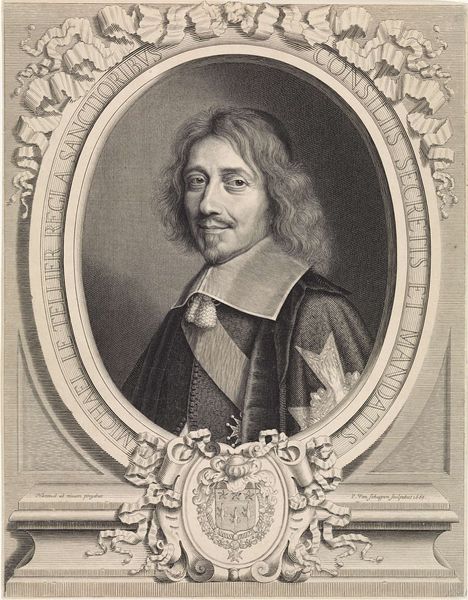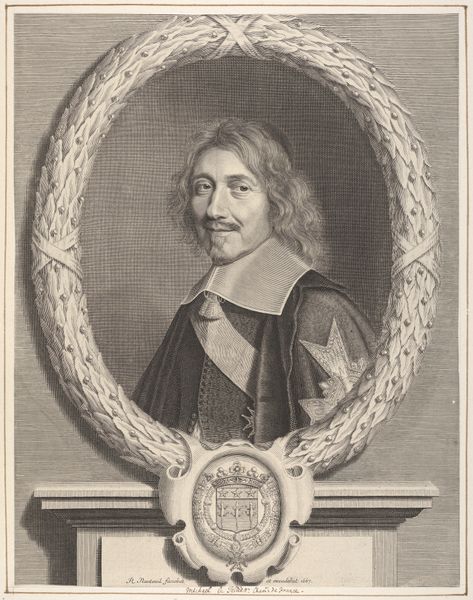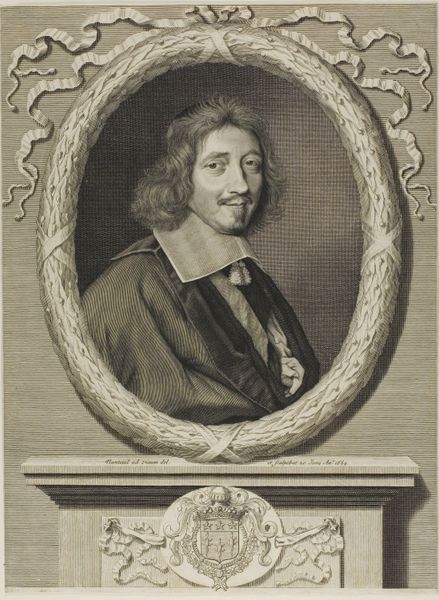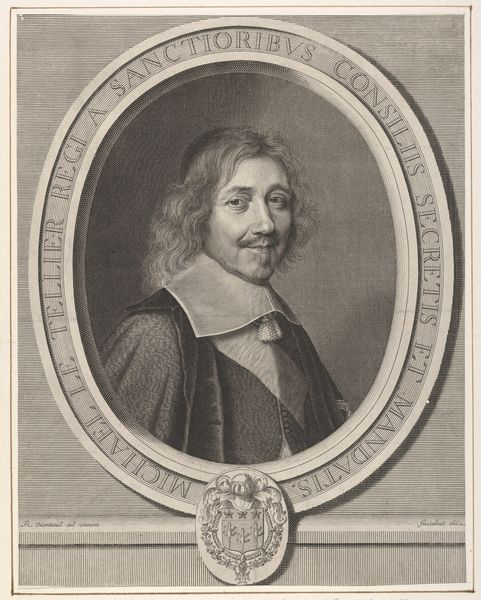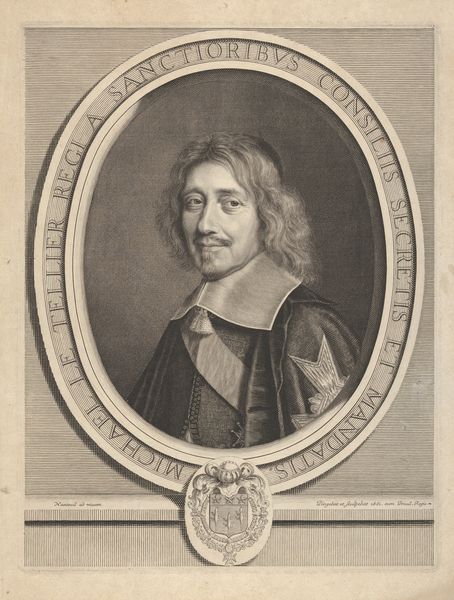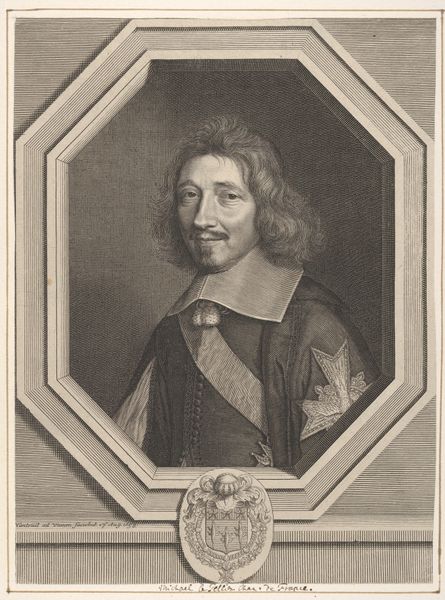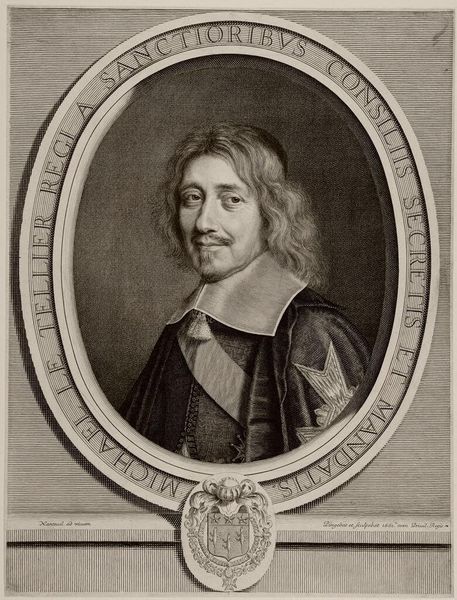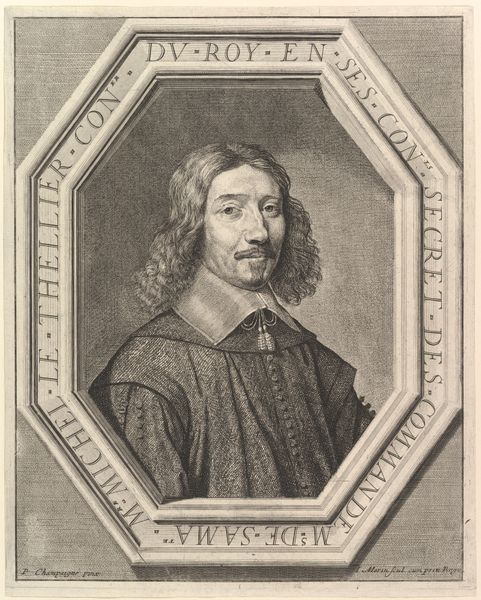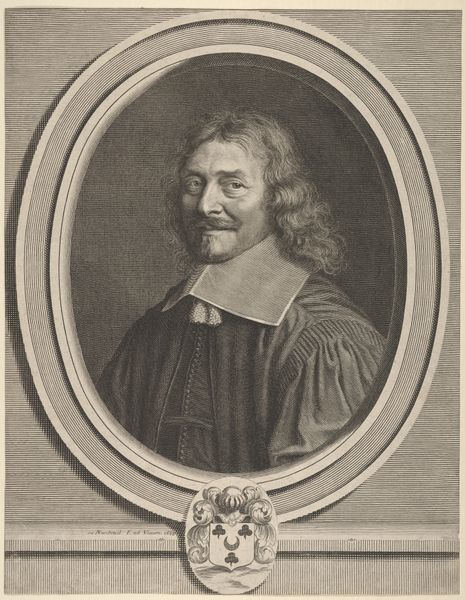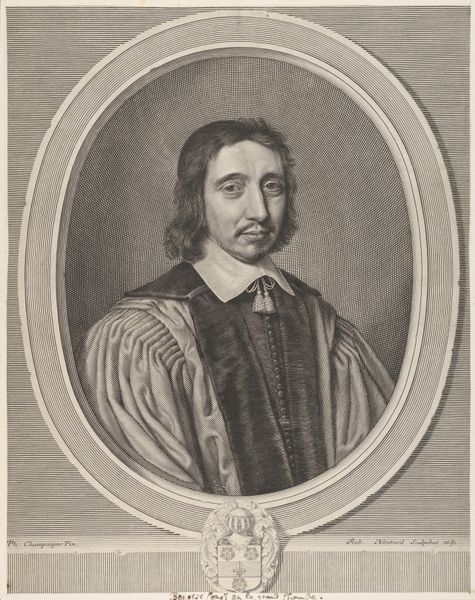
drawing, print
#
portrait
#
drawing
#
baroque
# print
Dimensions: sheet: 11 15/16 x 10 7/16 in. (30.4 x 26.5 cm)
Copyright: Public Domain
Curator: It's hard to not get a sense of gravity looking at this. The severe expression on his face framed with a formal arrangement… what's the story? Editor: What we have here is "Chancelier Michel IV Le Tellier", a portrait created by Robert Nanteuil in 1661. It is currently held at the Metropolitan Museum of Art in New York, crafted as an engraving, drypoint and burin on paper. Curator: I'm immediately struck by the artist's choice of framing. The laurel wreath feels almost…ominous. In contrast to the softer, almost playful rendering of the figure. Editor: Contextually, consider Le Tellier's role. He was Louis XIV's secretary of state for military affairs during a period of intense centralization of power. Nanteuil's print served a very specific purpose—the dissemination of a powerful man's image. Curator: Absolutely. And who sees themselves in this portrayal? What’s so interesting is that there are so many symbols of power displayed…I wonder if this portrait served as a reminder of established norms? Editor: The star on his cloak immediately conveys status. Also, look at how Nanteuil handled the texture of fabric – the lace, the heavy drape of his robe – it's a carefully constructed image of authority. Think about how portraits, as public displays, influenced fashion and social roles! Curator: Yes! And considering queer theory… were there constraints put on the identity of the person? This piece offers the chance to explore this idea of "ideal" presentation! It reminds us to investigate representation through these visual texts, these portraits. Editor: That’s interesting; thinking about it from that perspective provides insight into what visual signifiers were understood at the time, and what image the political machine aimed to portray and the portrait served its social purpose well into the next centuries. Curator: The print's meticulousness underscores Le Tellier's position and impact on shaping seventeenth-century France. It really does provide insight into the era. Editor: For me, what endures is understanding these images as constructed pieces. The Baroque loved grand spectacles.
Comments
No comments
Be the first to comment and join the conversation on the ultimate creative platform.
